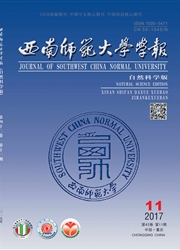

 中文摘要:
中文摘要:
车联网VANETs(Vehicular ad hoc network)被认为是下一代汽车系统的重要部分.VANETs的多数安全应用依赖于周期的基础安全消息BSM(Basic Safety Message)的可靠传输.然而,由于车辆密度、速度的不断变化,固定传输参数如BSM传输范围以及产生率会引起数据包碰撞,降低控制信道利用率,为此,传输参数应自适应VANETs安全应用的变化,而不是固定传输参数.考虑到车辆安全以及最大化控制信道利用率,提出了自适应设定传输范围以及数据包产生率ASRR(Adaptive-Set Range-Rate)算法.首先,先测量车头时距作为车辆安全的性能指标,并依据车头时距产生BSM产生率,然后再利用BSM产生率、车辆密度以及网络负载3个参数计算传输范围,使得BSM产生率、传输范围随车辆密度自适应地变化.仿真结果表明,在变化的车辆密度、车辆速度场景,提出的ASRR算法可以提高安全消息的传输成功率以及控制信道利用率.
 英文摘要:
英文摘要:
Vehicular Ad hoc networks(VANETs)are considered as an important component of next generation automotive systems.Various safety applications are supported by reliable delivery of the periodic basic safety messages(BSM)in vehicular communication.Due to variable vehicle density on the road,the fixed transmission parameters such as transmission range and packet generation rate of safe messages result in a large number of collisions and an inefficient use of the control channel application.The safety applications demand the adaptation of the above transmission parameters without compromising vehicle safety.A combined transmission range and packet generation rate control algorithm have been presented to take into account vehicles safety and maximizes the control channel utilization.At first,every vehicle calculates packet generation rate to provide vehicle safety measurement by means of the measured time headway metric.In the second step,transmission range is adapted based on vehicle density estimation,target network load and the packet generation rate of each vehicle.The performance analysis shows that proposed algorithm improves the safety message performance in terms of packet reception rate and control channel utilization for a range of vehicle densities and vehicle speeds.
 同期刊论文项目
同期刊论文项目
 同项目期刊论文
同项目期刊论文
 期刊信息
期刊信息
